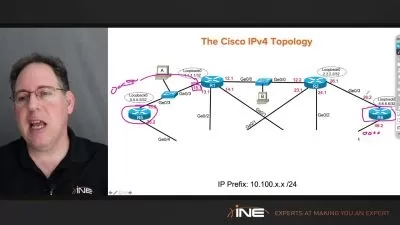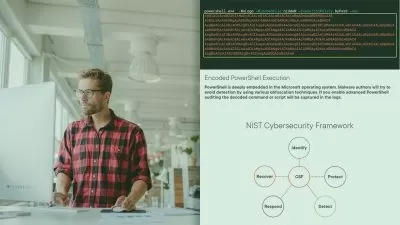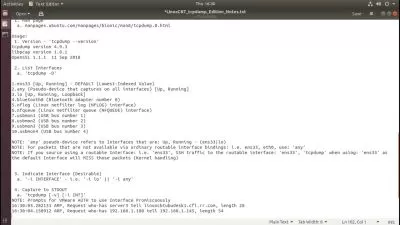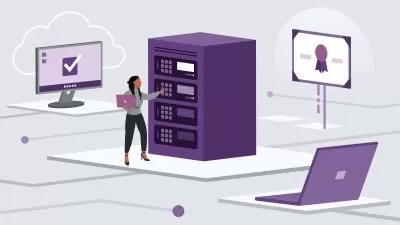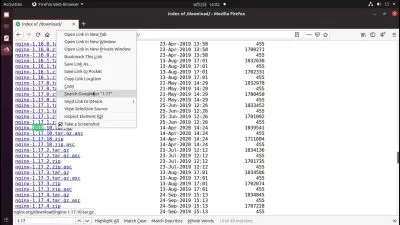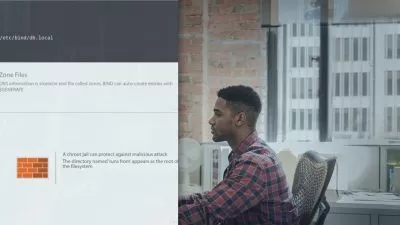Enterprise Storage Solutions with Linux and Windows Server
Vitalii Shumylo
13:23:14
Description
Master Storage Technologies: Windows Linux | Design, Deploy, Optimize | Cut Costs | Boost Performance | Hands-On Mastery
What You'll Learn?
- Implement enterprise storage solutions on Windows & Linux, mastering Storage Spaces, Deduplication, VDO, NAS, & SANs for high performance and scalability.
- Configure advanced storage features like RAID, logical volumes, file systems, and storage pools to optimize data integrity and resource utilization.
- Deploy and troubleshoot storage components (Fibre Channel, iSCSI, SMB, NFS) for efficient data access and transfer across organizational networks.
- Monitor, maintain, and develop disaster recovery strategies for storage environments, ensuring data protection, risk mitigation, and business continuity.
- Leverage hands-on labs and real-world scenarios to build expertise in designing, deploying, and optimizing robust storage infrastructures.
Who is this for?
What You Need to Know?
More details
DescriptionAdvance Your Highly Valuable Skills in Enterprise Storage Management with Linux and Windows Server for Unmatched Expertise
In today's data-driven world, efficient storage management is crucial for businesses of all sizes. This comprehensive course will equip you with the skills to design, implement, and maintain enterprise storage solutions using both Linux and Windows Server platforms.
Through hands-on labs and practical demonstrations, you'll dive deep into configuring local storage, implementing RAID configurations, and leveraging advanced technologies like Storage Spaces, Data Deduplication, and Virtual Data Optimizer (VDO) on Windows Server.
But that's not all - you'll also explore network-attached storage (NAS), storage area networks (SANs), and file-level storage solutions like SMB and NFS shares. Gain expertise in managing logical volumes, partitions, and file systems on Linux, ensuring optimal storage utilization and performance.
Whether you're a system administrator, IT professional, or anyone looking to expand their storage management expertise, this course offers a comprehensive journey through the world of enterprise storage. With a perfect blend of theoretical concepts and hands-on practical exercises, you'll be well-equipped to tackle real-world storage challenges across both Windows and Linux environments.
Invest in your career growth today and enroll in this course to become an unrivaled expert in enterprise storage solutions!
Who this course is for:
- IT Students and Aspiring Storage Professionals: Students pursuing IT-related degrees or certifications, as well as individuals aspiring to enter the field of storage management, will find this course an excellent starting point. It provides a solid foundation in enterprise storage concepts and equips learners with the practical skills necessary to kickstart their careers in this dynamic field.
- IT Professionals and System Administrators: This course is an invaluable resource for IT professionals and system administrators who are responsible for designing, implementing, and maintaining storage infrastructures within their organizations. By mastering the concepts and techniques covered in this course, they can optimize storage performance, enhance data security, and ensure business continuity.
- Storage Administrators and Engineers: Storage administrators and engineers who work with enterprise storage solutions will find this course extremely beneficial. It will equip them with the knowledge and skills necessary to effectively manage and troubleshoot storage environments, including advanced technologies like Storage Spaces, Data Deduplication, Virtual Data Optimizer (VDO), Network-Attached Storage (NAS), and Storage Area Networks (SANs).
- Cloud and Data Center Professionals: With the increasing adoption of cloud computing and the growing demand for efficient data center operations, this course is highly valuable for professionals working in these domains. They will gain insights into storage management best practices, enabling them to design and deploy scalable and high-performance storage solutions that meet the ever-growing data storage needs of modern businesses.
Advance Your Highly Valuable Skills in Enterprise Storage Management with Linux and Windows Server for Unmatched Expertise
In today's data-driven world, efficient storage management is crucial for businesses of all sizes. This comprehensive course will equip you with the skills to design, implement, and maintain enterprise storage solutions using both Linux and Windows Server platforms.
Through hands-on labs and practical demonstrations, you'll dive deep into configuring local storage, implementing RAID configurations, and leveraging advanced technologies like Storage Spaces, Data Deduplication, and Virtual Data Optimizer (VDO) on Windows Server.
But that's not all - you'll also explore network-attached storage (NAS), storage area networks (SANs), and file-level storage solutions like SMB and NFS shares. Gain expertise in managing logical volumes, partitions, and file systems on Linux, ensuring optimal storage utilization and performance.
Whether you're a system administrator, IT professional, or anyone looking to expand their storage management expertise, this course offers a comprehensive journey through the world of enterprise storage. With a perfect blend of theoretical concepts and hands-on practical exercises, you'll be well-equipped to tackle real-world storage challenges across both Windows and Linux environments.
Invest in your career growth today and enroll in this course to become an unrivaled expert in enterprise storage solutions!
Who this course is for:
- IT Students and Aspiring Storage Professionals: Students pursuing IT-related degrees or certifications, as well as individuals aspiring to enter the field of storage management, will find this course an excellent starting point. It provides a solid foundation in enterprise storage concepts and equips learners with the practical skills necessary to kickstart their careers in this dynamic field.
- IT Professionals and System Administrators: This course is an invaluable resource for IT professionals and system administrators who are responsible for designing, implementing, and maintaining storage infrastructures within their organizations. By mastering the concepts and techniques covered in this course, they can optimize storage performance, enhance data security, and ensure business continuity.
- Storage Administrators and Engineers: Storage administrators and engineers who work with enterprise storage solutions will find this course extremely beneficial. It will equip them with the knowledge and skills necessary to effectively manage and troubleshoot storage environments, including advanced technologies like Storage Spaces, Data Deduplication, Virtual Data Optimizer (VDO), Network-Attached Storage (NAS), and Storage Area Networks (SANs).
- Cloud and Data Center Professionals: With the increasing adoption of cloud computing and the growing demand for efficient data center operations, this course is highly valuable for professionals working in these domains. They will gain insights into storage management best practices, enabling them to design and deploy scalable and high-performance storage solutions that meet the ever-growing data storage needs of modern businesses.
User Reviews
Rating
Vitalii Shumylo
Instructor's Courses
Udemy
View courses Udemy- language english
- Training sessions 97
- duration 13:23:14
- Release Date 2024/05/14







